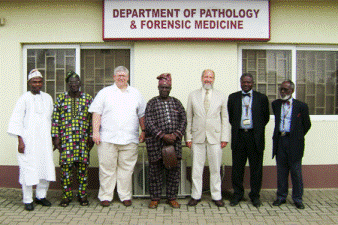Natural Resources, School of

Karl Reinhard Publications
Document Type
Article
Date of this Version
2012
Citation
Published in J. Buikstra & C. Roberts, eds., A Global History of Paleopathology (Oxford: Oxford University Press, 2012), pp. 751–764.
Abstract
Parasitology is the study of organisms that are symbiotic with other organisms. In this form of symbiosis, the parasite species by definition benefits from the interaction while the host is harmed to some degree. In actuality, some parasites benefit their hosts. The animals traditionally studied by parasitologists range from protozoa to arthropods, and include all types of internal and external worms. Ticks, fleas, lice, and a variety of insects that transmit parasites are also studied by parasitologists. Recently, a more holistic view of parasitism appeared, including bacteria and viruses. In essence, parasitology is the study of a certain kind of biological relationship that is very common in the natural world.
Humans host hundreds of parasite species. The details of the relationship between any parasite species and humans are defined by culture. Archaeology is the study of past humans and human culture. Therefore, archaeoparasitology is the analysis of parasitism based on archaeological evidence. As defined by Reinhard (2000a) and Reinhard and Araújo (2007), archaeoparasitology derives data from physical evidence such as artifacts, documents, and art. In addition, ecoartifacts such as coprolites, sediments, and human remains provide direct evidence of parasitism. Fisher et al. (2007) provide a holistic example of archaeoparasitological reconstruction of Albany, NY, based on analysis of medical documents, artifacts such as medicine bottles, archaeochemical analysis of sediments for evidence of medicines, reconstruction of sanitation, and direct analysis of parasite eggs from various domestic contexts. In addition, archaeopalynology (Chaves and Reinhard 2006) and archaeobotany (Reinhard et al. 1985) reveal evidence of medicines used to treat parasitic disease symptoms. In short, archaeoparasitologists sift through every imaginable type of archaeological residue that can provide any insight into the culturally defined relationship between human hosts and parasites. In doing so, we decipher the unique parascript specific to human-parasite cultural evolution.
Included in
Archaeological Anthropology Commons, Ecology and Evolutionary Biology Commons, Environmental Public Health Commons, Other Public Health Commons, Parasitology Commons


Comments
Copyright © 2012 Oxford University Press. Used by permission.